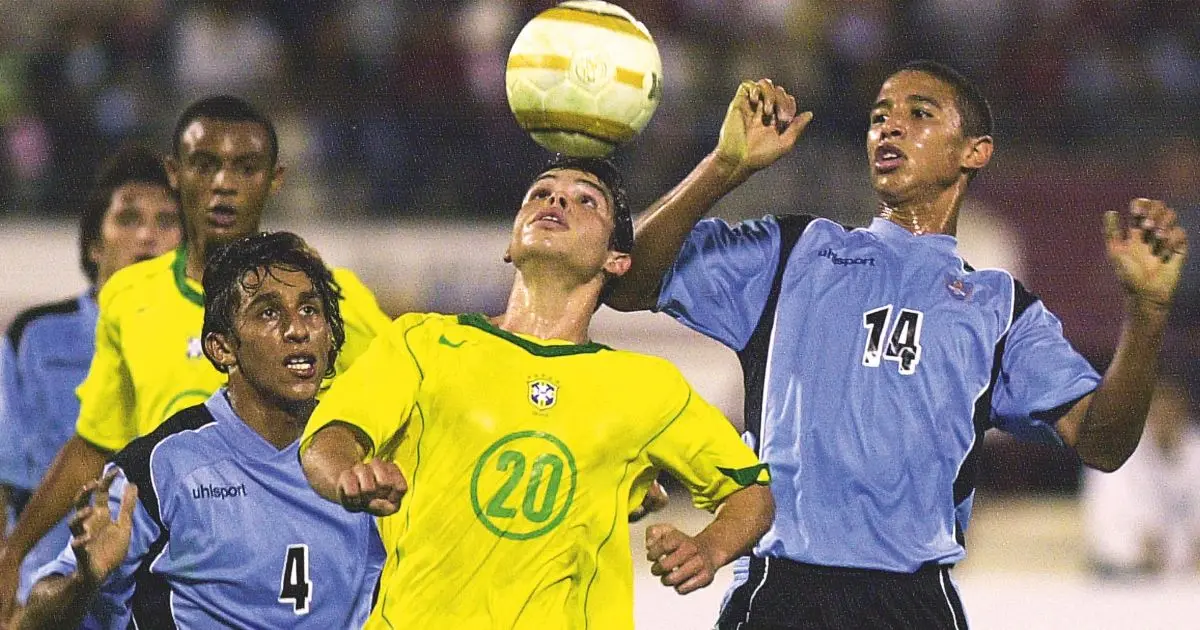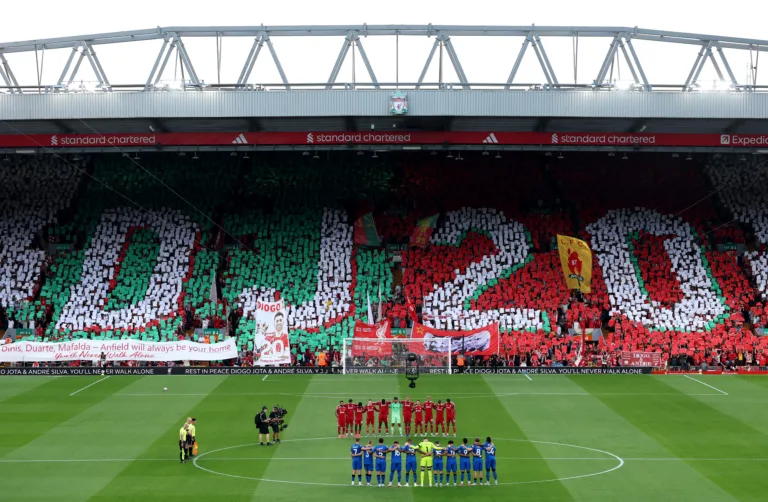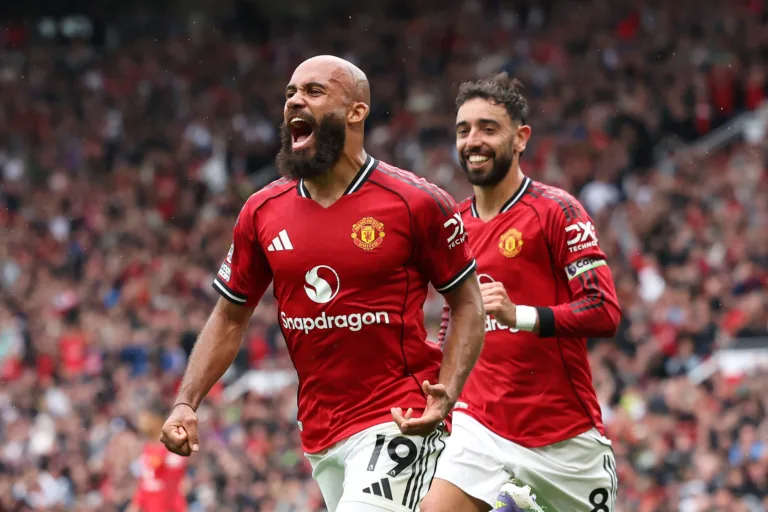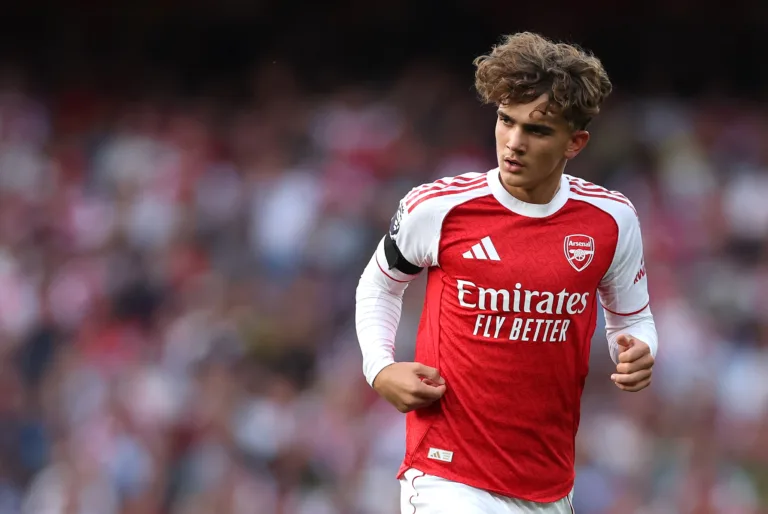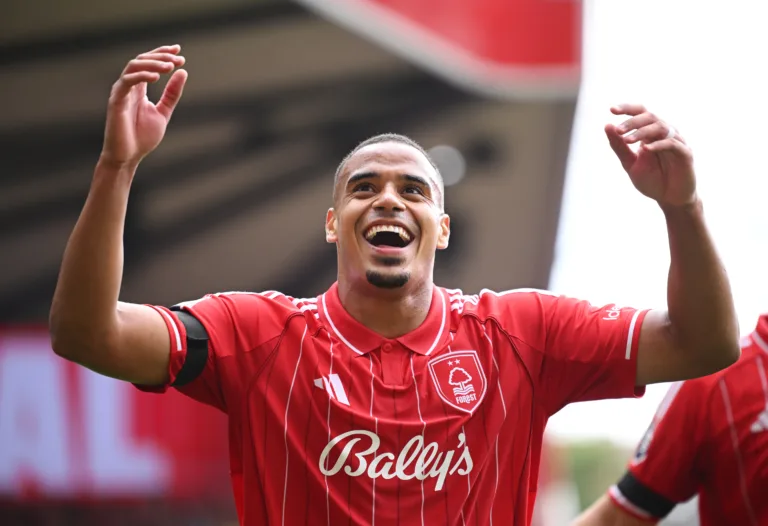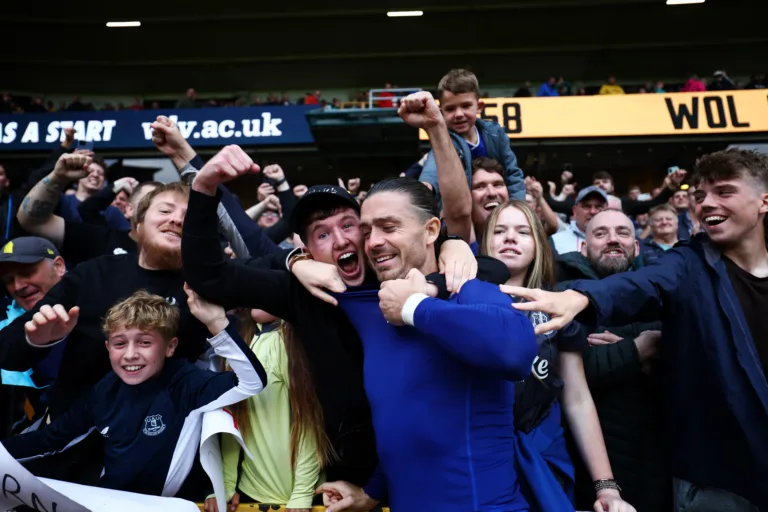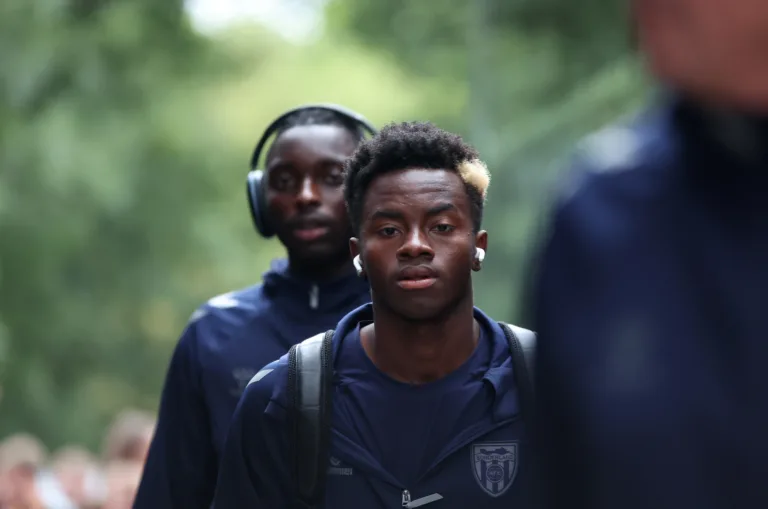Forgotten Wonderkids of Football Manager: Where Did It Go Wrong?
There’s a strange joy in finding a wonderkid on Football Manager before anyone else knows their name. That rush when you sign a 16-year-old for peanuts and five seasons later he’s bagging goals in a Champions League final. Football Manager has a knack for spotting talent long before it breaks through. Lionel Messi, Wayne Rooney, Erling Haaland all once lit up the game before they took over real-life football too.
But for every superstar it gets right, there’s a long list of forgotten names who never quite made it. Players who seemed destined for the top, only to fizzle out into obscurity, journeyman contracts or early retirements. Here’s a look back at some of Football Manager’s most hyped youngsters from the mid-2000s and why they didn’t become the stars we expected.
Football Manager 2005
Nicolae Mitea
Ajax’s Romanian winger was lightning quick in Football Manager 2005, a nightmare for full-backs and a bargain buy for any mid-table side aiming for glory. In real life, Mitea had a promising start at Ajax, debuting as a teenager and scoring seven goals in his first Eredivisie season. But injuries wrecked his development. He struggled for fitness, fell out of favour, and drifted through short stints in Romania, Greece and lower divisions. By his mid-20s, he was out of top-flight football entirely.
Benedict Vilakazi
At just 1.57 metres tall, Vilakazi was a diminutive midfield dynamo from South Africa with bags of potential in FM 2005. The game rated his creativity, flair and technical ability highly, making him a cult pick. Off the pitch, though, things turned messy. Legal issues and off-field controversies disrupted his progress. A move to Europe with Aalborg failed to ignite, and he never hit the heights many expected, eventually returning to play domestically.
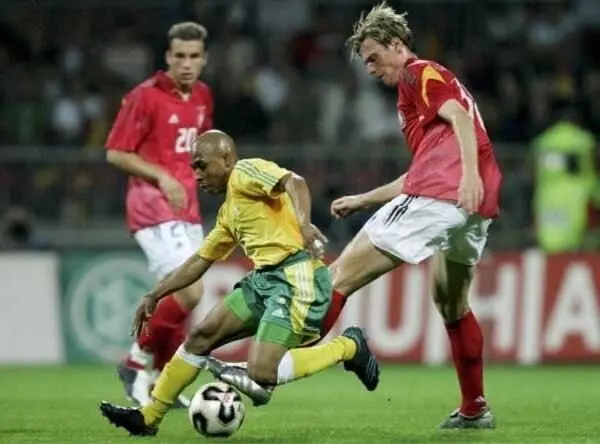
Evandro Roncatto
Roncatto was an FM favourite thanks to his flair, versatility and Brazilian passport, it was almost like he was always a cheat code. He had won the U17 World Cup alongside names like Dani Alves, so hopes were high. But Roncatto’s career stalled in Brazil and never took off abroad. He bounced around clubs in Portugal, Cyprus, Kazakhstan and beyond, never settling. His case became the perfect caution for fans who believed Football Manager hype always matched real-life destiny.
Football Manager 2006
Valeri Bojinov
Bojinov was a monster in Football Manager 2006. Strong, clinical and versatile, he felt like a future Ballon d’Or contender. In real life, he started brightly in Italy with Lecce and Fiorentina before joining Juventus. But injuries and inconsistency hampered his progress. Spells at Manchester City and Sporting CP showed flashes, but he never fulfilled that immense early potential. His career became a nomadic one, with moves across Europe but none sticking.
Freddy Adu
The poster boy of Football Manager disappointments. Adu was hyped as the American Pele and FM 2006 didn’t hesitate to boost his attributes accordingly. Signing him felt like a bargain for future greatness. Reality bit hard, though. Adu never found a stable home in club football, moving across more than a dozen teams in as many years. Whether it was poor career choices, overexposure or development issues, Adu became a classic case of potential unfulfilled.
Anthony Vanden Borre
Football Manager 2006 made Vanden Borre an all-round defensive talent, able to play full-back or in midfield with ease. In real life, he broke through early at Anderlecht and looked destined for a long international career. But attitude issues and inconsistent performances slowed him down. He had brief spells in Italy and France before returning to Belgium, never quite living up to the early promise that FM saw in him.
Football Manager 2007
Leandro Lima
Lima was one of those Brazilian gems Football Manager managers pounced on instantly. Quick, skillful and with high potential ratings, he was too tempting to ignore. He even got a move to Porto in real life, but that’s where the fairytale stopped. He struggled to adapt in Europe, bounced between loans and lesser leagues, and eventually faded into lower-tier Brazilian sides. Another star that burned out early.
Libis Arenas
A Colombian goalkeeper with bags of potential in Football Manager 2007, Arenas seemed destined to follow in the footsteps of Oscar Cordoba or René Higuita. In truth, his career never got off the ground. Despite several caps for Colombia at youth level, he struggled to establish himself at club level. He spent most of his time on the bench or in short-term contracts, and by his mid-20s, had slipped off the radar completely.
Sherman Cardenas
Cardenas was tipped as Colombia’s next creative midfielder. FM 2007 gave him standout stats in vision and technique. He had a decent career domestically, winning titles with Atlético Nacional and Junior. But he never quite made the leap to Europe, nor did he become a regular for the national team. Solid, but far from the elite talent Football Manager once promised.
Nicolás Millán
Back in Football Manager 2007, Nicolás Millán was labelled the “Chilean Cristiano Ronaldo” and came with all the bells and whistles that FM wonderkids tend to get. At just 14 years old, he became the youngest ever player to feature in the Chilean top flight, which only added fuel to the hype. Football Manager handed him sky-high potential, and for those who scouted South America early, he was a dream pick, explosive pace, flair in abundance, and a price tag that wouldn’t break the bank. It felt like only a matter of time before a big European club snapped him up.
But Millán’s career never really got off the ground. Despite the early debut, he failed to make a lasting impact at Colo-Colo and never made the move to Europe. He spent the bulk of his career floating around lower-tier Chilean clubs, occasionally showing glimpses of his old promise but never breaking through. The weight of early hype seemed to do more harm than good. FM saw a future global star. Reality gave us a cautionary tale about pressure, development and just how misleading youth debuts can be.
Football Manager 2008
Michael Johnson
At one point, Michael Johnson was seen as the best midfield prospect to come out of Manchester City’s academy in years. FM 2008 captured that promise perfectly, rating him highly for vision, composure and technical ability. He looked set to be a mainstay in England’s midfield for a decade. Sadly, injuries ravaged his career just as it was beginning. Off-field issues, including struggles with mental health, contributed to a sudden drop-off. Johnson retired early, later re-emerging in a completely different line of work. One of the game’s saddest ‘what could have been’ stories.
Lulinha
For those who played FM religiously in 2008, Lulinha was a must-sign. With outrageously high potential and stats that made him look like the heir to Ronaldinho, he lit up save files across the world. In real life, though, his career never got off the ground at Corinthians. He struggled with expectations, failed to develop physically, and never adapted to the demands of senior football. Spells in Portugal, South Korea and the UAE followed, but the star that FM imagined never materialised.
Kerlon
Famous for his ‘seal dribble’ more than his output, Kerlon’s real-life gimmick bled into FM 2008, where he was a flair merchant with sky-high potential. He eventually got a move to Inter Milan, but his body never played ball. Chronic knee injuries plagued him throughout his short career. Most fans remember the dribble, not the games he played, which is telling. He became more of a trivia answer than a top player.
Football Manager 2009
Vincenzo Fiorillo
Touted as Gianluigi Buffon’s natural successor, Fiorillo was FM 2009’s go-to wonderkid goalkeeper. He captained Italy’s youth sides and was already on Sampdoria’s books. But while he had the fundamentals, Fiorillo never kicked on. He spent most of his career stuck in the lower tiers of Italian football, mainly Serie B, never breaking through at a top club. FM players expected a world-class keeper, instead, they got a career backup.
Henri Saivet
Saivet was a rapid, skilful winger who could also slot in as a striker, making him incredibly versatile in FM 2009. Bordeaux had high hopes too. He eventually made his Ligue 1 debut as a teenager and had decent spells in France and England. But he never became the attacking force FM predicted. Newcastle signed him in 2016, but he barely played and was loaned out repeatedly. A player with all the tools, but one who never put them together consistently.
John Fleck
In FM 2009, Fleck was described as the Scottish Wayne Rooney. High praise, and a big reason for his inflated stats. Rangers gave him his debut early, and he looked like he’d be a Premier League player within a few years. Instead, it took a detour through the Championship and League One before he rebuilt his reputation at Sheffield United. Eventually, he did make it to the Premier League, but not in the way FM had forecast. A slow burn, rather than a wonderkid explosion.
Football Manager 2010
Franco Zuculini
Aggressive, tireless and technically gifted, Zuculini was a midfield general in FM 2010. Hoffenheim snapped him up early, and it seemed like the beginning of a big European career. Instead, he bounced from club to club, struggling with form and injury. Despite some solid spells in Spain and back in Argentina, he never became the dominant force many expected. His younger brother Bruno arguably ended up with a better career, which says a lot given the hype Franco carried.
Keirrison
A prolific scorer in FM 2010 and real life, Keirrison’s numbers at Coritiba and Palmeiras earned him a move to Barcelona. But that’s where the dream ended. He never played a single match for them, instead going on a carousel of loans that stunted his progress. A combination of poor timing, lack of support and questionable decisions turned a surefire star into a forgotten footnote. One of FM’s biggest busts given how certain his success seemed.
Diego Buonanotte
FM loved Buonanotte for his balance, flair and creativity. At just 5’3″, he drew comparisons to Messi and had an impressive spell at River Plate. But tragedy struck when he was involved in a fatal car crash that killed three of his friends. He survived, but his form and confidence were never quite the same. He had a journeyman career across South America and Europe, but never scaled the heights FM had in mind.
Martín Galván
Galván was a classic FM curveball, a 15-year-old Mexican striker who looked like he’d dominate for years. Debuting for Cruz Azul absurdly young, he quickly caught the eye of Football Manager scouts. But maturity issues and stalling development saw him struggle to make an impact at senior level. He ended up floating through Liga MX and lower-tier clubs without ever making the leap FM players expected.
Football Manager 2011
Danny Wilson
After a breakthrough season at Rangers, FM 2011 had Wilson tipped as a future Liverpool and Scotland stalwart. He had composure and ball-playing ability well beyond his years. Liverpool snapped him up, but he never quite cracked the first team. Loan spells became the norm, and though he rebuilt his career back in Scotland, he never matched the early buzz. One of many defenders whose peak came far too early.
Yaya Sanogo
Sanogo was a beast in FM 2011. He was big, powerful and deadly in front of goal. Arsenal fans had reason to get excited when he signed in 2013, but his real-life performances never inspired the same optimism. Injuries ruined any momentum he gained, and his playing style never truly adapted to top-level football. Despite brief highs like a brace in the Emirates Cup, Sanogo faded out quickly and became a trivia answer rather than a striker of note.
Khouma Babacar
In Football Manager 2011, Babacar looked like the next big thing out of Fiorentina. With size, speed and finishing ability, he was perfect for those who wanted a battering ram up front. While he did have decent spells in Serie A, mostly as a backup, he never became the elite forward many hoped for. Consistency and injuries were his biggest issues. He was never bad, just never as good as FM said he’d be.
Football Manager 2012
Adryan
Anyone who managed Flamengo on FM 2012 probably built their side around Adryan. A No.10 with flair, technique and high potential, he was expected to follow in the footsteps of Zico. He did eventually land in Europe, including a brief and underwhelming loan spell at Leeds United, but couldn’t adapt. His career became a series of underwhelming stints, and the magic never quite reappeared. A YouTube star more than a consistent pro.
Carlos Fierro
Fierro was a certified Football Manager gem, young, quick, and with a knack for scoring. After leading Mexico’s U-17s to a World Cup win, he became a fan favourite in FM 2012. But unlike other youth stars from that team, Fierro’s senior career plateaued. He stayed in Mexico and was solid but unspectacular. The European move never came, and the goals dried up over time. He never turned into the elite striker FM players banked on.
Luc Castaignos
Castaignos had the stats and physique to be a dominant No.9, and Football Manager 2012 rated him accordingly. After a strong season with Feyenoord, Inter Milan came calling. But the move was too soon. He barely played in Italy and never found his footing. Although he rebuilt somewhat in the Netherlands and Germany, he never became a top-level forward. Injuries, timing and perhaps a bit of overhype sealed his fate.
Football Manager 2013
Romulo
Romulo had everything you wanted in a modern defensive midfielder. Strong, mobile, technically gifted and tactically aware, FM 2013 made him a lynchpin for any top-tier squad. After starring for Brazil at the Olympics and moving to Spartak Moscow, it looked like he was on the cusp of greatness. Then came a catastrophic knee injury. It wiped out nearly two years of his career and he never regained the same level. A classic case of timing and bad luck sabotaging serious potential. At least he got his pay check from Spartak.
Rubén Pardo
A metronomic passer from Real Sociedad, Pardo was hailed as the next Xabi Alonso, and FM 2013 bought into the hype. He had elite vision and was often the heartbeat of Football Manager midfields. In real life, he showed flashes of class in La Liga but lacked consistency. A move to Bordeaux didn’t reignite things, and he eventually settled into more modest roles back in Spain. Not a flop, but far from the midfield general the game made him out to be.
Samed Yeşil
For anyone managing a lower-league English side in Football Manager 2013, Samed Yeşil was gold. The German-Turkish striker was a bargain at Liverpool and had clinical finishing in-game. In reality, two ACL injuries wrecked his development before he ever got going. He managed just two senior appearances for Liverpool and drifted between leagues in Germany, Greece and Turkey. Another wonderkid who never had a fair shot due to injury.
Victor Andrade
Dubbed the ‘new Neymar’ far too early, Andrade’s FM rating in 2013 was sky-high. His pace and flair made him a terror on the wing. But the hype far outweighed the output. He did earn a move to Benfica but couldn’t break into the first team. A string of loans followed, and his career fizzled out in Brazil’s lower tiers. Andrade became yet another reminder that not all teenage flair players mature into stars.
Football Manager 2014
Éder Balanta
The ultimate FM 2014 centre-back cheat code. Balanta had unreal stats and could dominate defences into the 2030s. River Plate fans were excited too, he was strong, composed and quick. A move to Europe finally came with Basel, but that was pretty much his peak. He never made it to a top-five league, and though he’s still active, he never became the elite defender FM players banked on. Too good in the game, too ordinary in real life.

Jordan Rossiter
Once hailed as Steven Gerrard’s natural heir, Rossiter burst onto the Liverpool scene with a debut goal and the full backing of Football Manager 2014. But his body didn’t keep up. Persistent injuries stalled his development, and after leaving Liverpool, he bounced around the EFL without ever cementing a spot. Now in the lower leagues, his story echoes too many FM players, early hype, then years of ‘what if’.
Dan Crowley
Arsenal’s midfield maestro in FM 2014, Crowley had technique and creativity in spades. The comparisons to Jack Wilshere were inevitable. But off-pitch questions about attitude, coupled with a lack of physical development, saw him struggle. He had brief spells at Birmingham, Hull and in the Dutch Eredivisie, but never fulfilled the early promise. Still only in his mid-20s, but that top-level future seems long gone.
Ewandro
Football Manager 2014 had Ewandro down as Brazil’s next great wide forward. With explosive pace and trickery, he was a constant threat on either wing. A move to Udinese followed a strong run at São Paulo, but he never cracked it in Europe. Like so many Brazilian exports, he went on a tour of mid-level clubs before fading from memory. A victim of timing and inconsistency more than lack of talent.
Football Manager 2015
James Wilson
In Football Manager 2015, James Wilson looked like the next great striker off Manchester United’s production line. With high finishing and composure stats, he quickly became a must-start. He even scored twice on his Premier League debut, but his development stalled. Loans to Brighton, Derby and others didn’t help, and a major knee injury knocked him further off course. Now plying his trade in the lower leagues, Wilson’s story is a warning about relying too much on early hype.
Sergio Díaz
A teenage prodigy at Cerro Porteño, Díaz had all the hallmarks of a future star. Football Manager 2015 boosted him with top-tier agility and flair ratings. Real Madrid even snapped him up for their Castilla side. But he never settled in Spain, and repeated injuries set him back. Loans across South America and lower-tier Spanish sides followed, and he’s now back in Paraguay trying to rebuild. Another talent lost in the Real Madrid reserve system.
Max Meyer
A German wonderkind who really did look the part in Football Manager 2015. Meyer had control, agility, passing. Everything you wanted from a modern No.10. Schalke gave him the platform, but contract disputes and a stalled move to a bigger club led to him joining Crystal Palace. It didn’t work out. A mix of poor form, lack of minutes and positional confusion saw him slide down the ranks. A prime example of how early fame doesn’t guarantee a big career.
Andrija Živković
In FM 2015, Živković was Serbia’s brightest hope. Fast, two-footed, and with brilliant technique, he was a top pick for FM managers. He shone for Partizan and made a bold move to Benfica, but couldn’t hold down a regular spot. A revival came at PAOK, but the trajectory never matched FM expectations. He’s had a solid career, but far from the world-beater many expected when he was bossing Football Manager saves as a teenager.
Football Manager 2016
Donis Avdijaj
There was a time when Avdijaj was considered one of the most gifted young players in Europe. Football Manager 2016 reflected that, giving him elite dribbling and flair attributes. But off-field issues, including a bizarre €50 million release clause Schalke slapped on him as a teenager, hinted at a complicated path. His career has been wildly inconsistent, with short-lived spells in Austria, the Netherlands and even Kosovo. All the skill, but never the focus.
Lincoln
Not to be confused with the later Lincoln from Flamengo, this Lincoln was tipped as the next attacking star out of Grêmio. FM 2016 treated him as the next Oscar or Philippe Coutinho. But despite a few decent games early on, he never cemented a starting role. Moves to Turkey and Portugal followed, but he couldn’t adapt. Still playing, but nowhere near the level FM projected.
Bilal Ould-Chikh
When Benfica signed Ould-Chikh from Twente, it felt like a coup. Football Manager 2016 had him pegged as a future Dutch international, with trickery and pace in abundance. But the talent never translated to senior success. Attitude concerns and patchy form saw him move between clubs in the Netherlands, Turkey and Portugal without ever establishing himself. A cautionary tale of early hype and limited end product.
Abdou Diakhate
Diakhate was a physical monster in Football Manager 2016, a towering midfielder who could dominate games despite being a teenager. Fiorentina gave him a platform, and scouts raved. But his development stalled quickly, and he failed to break through. He moved around lower-tier Italian clubs before disappearing off the radar entirely. Another FM-generated beast who just didn’t make the jump to real-life football.
Football Manager 2017
Johannes Eggestein
A prolific youth scorer for Germany and Werder Bremen, Eggestein was Football Manager 2017’s classic poacher. Quick, clever and clinical, he was a gem for mid-tier saves. In real life, though, the transition to senior football proved tough. He struggled for minutes at Bremen, dropped down the divisions, and despite a recent revival in Austria, he never reached the top. His younger brother Maximilian arguably had the steadier career.
Zé Gomes
A Benfica academy product hyped heavily in FM 2017, Zé Gomes had all the right ingredients; pace, finishing, and potential through the roof. He was scoring for fun at youth level and looked destined for big things. But senior football exposed gaps in his game. He never broke into Benfica’s first team and ended up floating through Portugal’s second tier. One of FM’s sharpest fall-offs in recent memory.
Ben Woodburn
When Woodburn scored for Liverpool as a 17-year-old, it felt like the beginning of something special. Football Manager 2017 certainly thought so, handing him superb potential and playmaking stats. But his career plateaued quickly. Loan spells at Sheffield United, Oxford and Blackpool brought flashes, but never consistency. Injuries and confidence issues held him back, and he’s now rebuilding in the lower leagues. A reminder that early debuts aren’t always signs of greatness.
Riechedly Bazoer
Once touted as the next great Dutch midfielder, Bazoer’s FM 2017 stats made him an instant starter. Ajax fans had high hopes too, but inconsistency and reported clashes with coaching staff saw him moved on. A failed stint at Wolfsburg was followed by loan after loan. He showed signs of resurgence at Vitesse, but the elite path many envisioned never came to pass.
Football Manager 2018
Kasper Dolberg
After a breakout year at Ajax, Dolberg was rightly a hot commodity in FM 2018. Tall, elegant and with a rocket shot, he looked like a complete forward in the making. He did fairly well at Nice, but inconsistency and injuries slowed him down. Off-field issues, including being a victim of theft by a teammate, didn’t help. He’s still playing in Europe, but his trajectory has flattened out far from the early Zlatan comparisons.
Amadou Diawara
By FM 2018, Amadou Diawara had already carved out a reputation as one of Europe’s brightest young midfielders. Calm under pressure, excellent on the ball and positionally sharp, he was the kind of player you could build a side around. Napoli had just picked him up after a breakout spell at Bologna, and FM projected him as a future anchor for any top team. But his career never took the leap many expected. Limited minutes at Napoli and later Roma saw him stagnate rather than develop. Injuries and managerial changes didn’t help either. He’s now playing in Spain for Eldense, still only in his mid-20s, but the promise of being a world-class holding midfielder is a far cry from happeneing. FM players saw a future Champions League regular, the reality has been far more low-key.
Pietro Pellegri
Pellegri was the youngest Serie A goalscorer since Amedeo Amadei, so it’s no surprise FM 2018 rated him as a generational forward. Monaco splashed big money on him, but recurring injuries derailed everything. He’s still only in his early 20s, now trying to relaunch at Torino, but the explosiveness and hype have long since faded. FM saw a phenom; reality got a rehab regular.
Willem Geubbels
Geubbels was one of the fastest players in Football Manager 2018, a French forward who cost a fortune if you didn’t move early. Monaco signed him for €20 million as a teenager, but like Pellegri, injuries crushed his momentum. He barely featured during his time in Ligue 1 and eventually dropped to Swiss football. A raw speedster who never developed into a full package.
Football Manager 2019
Fiete Arp
FM 2019 had Fiete Arp pegged as Germany’s next goalscoring icon. After an early breakthrough at Hamburg, he looked a smart signing for Bayern Munich. But he never got near the first team. Constant injury issues and a loss of confidence saw him relegated to reserve football. He’s now at Holstein Kiel, a long way from the heights Football Manager had forecasted. One of the more dramatic flameouts of recent editions.
Oliver Batista Meier
A Bayern Munich academy product with superb balance and flair, Batista Meier was another Football Manager cult favourite. The German-Brazilian winger made a few senior appearances but never convinced the staff at Bayern he could make the leap. He’s since bounced to the Dutch league and back, without finding consistency. A player with technical gifts but little final product.
Cengiz Ünder
Unlike many on this list, Ünder did reach the top tier, at least briefly. He had a strong start at Roma and was a regular for Turkey, leading FM 2019 to give him elite winger potential. But injuries, defensive work-rate issues and inconsistency saw him fall out of favour. Moves to Leicester and Marseille didn’t quite click either. Still a capable player, but not the star Football Manager promised.
Football Manager 2020
Marco Kana
Kana was seen as the next big Belgian defender, able to slot into midfield or centre-back. FM 2020 loved his versatility and composure. He made early appearances for Anderlecht and looked the part. But since then, his development has stalled. He’s dropped down the pecking order and hasn’t pushed on physically or tactically. Still young, but his FM ceiling looks distant now.
Jérôme Onguéné
Onguéné was a beast in FM 2020; strong, quick and dominant in the air, and not least an absolute bargain buy. He impressed at Red Bull Salzburg, earning a move to Eintracht Frankfurt. But that transfer didn’t work out, and he’s struggled for minutes ever since. Injuries and tactical fit have been issues, and now he finds himself trying to reignite things via loans. Football Manager rated him highly, but he’s yet to find the right home.
Naci Ünüvar
A creative gem in FM 2020, Ünüvar came through Ajax’s famed academy with the same expectations placed on players like Ziyech or Van de Beek. But things haven’t clicked. A loan to Turkey was underwhelming, and he’s yet to cement a role even at Jong Ajax. Questions about his physicality and role in modern systems have limited his progression. Still only in his early 20s, but momentum is slipping.
Emanuel Vignato
An Italian-Brazilian winger with lovely feet and an eye for a killer pass, Vignato was a budget wonderkid in Football Manager 2020. He had strong spells at Chievo and Bologna, but hasn’t pushed on as hoped. He’s since fallen out of favour and was even linked with a move back to Serie B. The flair is still there, but his impact is fading fast.
Football Manager 2021
Fábio Silva
Fabio Silva was one of FM 2021’s best young forwards, tall, technical and ice-cold in front of goal. Wolves bet big on him, paying over £30 million, but the Premier League came too soon. He showed promise but lacked physicality. A loan to Anderlecht helped, but he’s not yet returned as a transformed player. There’s still hope, but the world-class tag looks a stretch now.
Youssoufa Moukoko
No wonderkid in FM 2021 carried as much buzz as Youssoufa Moukoko. He was a goalscoring machine in the youth ranks, breaking records left and right for Borussia Dortmund, and FM turned that hype into in-game dominance. If developed properly, he could easily become the best player in the game, an unstoppable forward with pace, power and a lethal finish. But reality’s been messier. Whispers about age fraud have followed him around since he was a teenager, and though never substantiated, they’ve clouded his story. On the pitch, that early physical dominance hasn’t translated to senior football. After falling down the pecking order at Dortmund, he moved to Nice in 2024 but struggled badly there too. He still flashes glimpses of the old spark, but the FM prediction of a Ballon d’Or winner looks a long way off right now.
Yusuf Demir
Often dubbed the ‘Austrian Messi,’ Demir was magic in FM 2021, agile, technical and full of flair. A loan move to Barcelona was supposed to launch his career, but it fizzled quickly. He barely featured, returned to Rapid Vienna, and struggled to find his form. A move to Galatasaray hasn’t reignited things either. Another example of raw talent meeting the grind of elite football and falling short. What should have been a dream move to Barcelona, turned into a nightmare reality for Demir.
Ilaix Moriba
Moriba broke into Barcelona’s first team with maturity and aggression in midfield, earning rave reviews. FM 2021 picked up on the hype, handing him massive potential. But a contract dispute led to a move to RB Leipzig, and his development stalled. He hasn’t locked down a starting spot and looks caught between positions. Still promising, but the leap to elite hasn’t happened.
Football Manager 2022
From this point on, it gets harder to say definitively whether these players will fall into the same category as the forgotten wonderkids of the past. The names from FM 2022 onwards are still young, still developing, and still have time to turn things around. But based on the early signs, they haven’t hit the levels that were once expected, at least not yet. Injuries, stalled development or difficult club situations have played a part, and while it’s not fair to write them off entirely, the short-term trajectory has fallen short of the hype FM built around them.
Joe Gelhardt
Often described as a throwback forward with the tenacity of Wayne Rooney, Gelhardt was a fan favourite on FM 2022. His aggressive style, dribbling and finishing made him a natural pick for any team looking to build around youth. Leeds United gave him early chances, but managerial chaos and lack of structure didn’t help. He struggled to find consistent minutes and was eventually loaned out to the Championship. The potential’s still there, but the stardom predicted by Football Manager hasn’t arrived yet.
Ansu Fati
Fati’s rise was meteoric, youngest goalscorer in Barcelona’s history, a Spain international before turning 18, and Lionel Messi’s symbolic No.10 successor. FM 2022 gave him off-the-chart potential, and rightly so. But persistent knee and hamstring injuries have wrecked his momentum. A loan move to Brighton in 2023 hasn’t reignited things either. His story isn’t finished, but the footballing world expected a new superstar, not a player battling to stay fit.
Gio Reyna
Reyna was one of Football Manager 2022’s best attacking midfielders, a generational talent for the USA and Borussia Dortmund. Technically, he had everything. But repeated muscular injuries and tactical changes at Dortmund limited his development. While he’s still involved in the national setup, he’s no longer seen as the centrepiece many thought he would be. FM expected a Champions League regular. Right now, he’s still fighting for minutes after a poor spell at Nottingham Forest and lots of competition at Dortmund.
Tanguy Nianzou
Highly rated in FM 2022 for his physicality and ball-playing ability, Nianzou seemed to be Bayern Munich’s long-term solution at centre-back. He then moved to Sevilla for more minutes, but has yet to establish himself fully. Injuries, inconsistency and competition have kept him from taking the leap. FM players loved his ceiling, but the real-life version has yet to show the same level.
Football Manager 2023
Harvey Elliott
Football Manager 2023 saw Elliott as a polished attacking midfielder, already Premier League-ready with huge upside. Klopp clearly rated him too, giving him minutes in big matches. But he’s not yet nailed down a starting place at Liverpool. Questions remain about his best position and whether he can impact games at the very top. He’s still young, but FM projected a superstar. So far, he’s more rotation option than game-changer.
Liel Abada
Liel Abada was one of the most reliable young wingers you could sign in FM 2023. Fast, direct and with an eye for goal, he was the kind of player who could rack up double figures in both goals and assists from the right flank. His real-life form at Celtic matched the hype early on, particularly under Ange Postecoglou, where he helped fire the club to a domestic treble. A consistent performer in the Scottish Premiership, he looked ready for the next step. But everything shifted quickly. A long-term thigh injury in 2023 was the first blow, followed by growing off-field tension sparked by the conflict in Gaza. While recovering, Abada became the target of criticism back home in Israel after Celtic supporters showed public solidarity with Palestine. That pressure created a volatile and ultimately untenable situation.
By March 2024, Abada was sold to Charlotte FC in MLS for around £10 million. In his parting message, he admitted that leaving Celtic hadn’t been in his plans and thanked the club for their support during a difficult period. From a football perspective, the move felt like a step down, not because of the league, but because of how promising his trajectory had once looked. FM predicted a European-level winger with Champions League potential. Now 22, Abada still has time to reboot his career, but the short-term reality hasn’t aligned with the version of him Football Manager fans came to rely on.
Cesare Casadei
Cesare Casadei was one of the standout midfield talents in FM 2023, tall, athletic, and dominant in both boxes. His rise through Inter Milan’s youth system and performances with Italy’s youth teams, including a Golden Ball-winning run at the U-20 World Cup, made him a must-sign prospect. Chelsea secured his signature in 2022, and Football Manager players expected him to eventually anchor their midfield. But his time in England never quite took off. Despite solid loan spells at Reading and Leicester, he failed to break into Chelsea’s Premier League squad and was limited to Conference League cameos. In January 2025, he completed a permanent move to Torino for €15 million, a sign that the club were ready to move on and he was ready to reset.
Casadei has since said Torino was always his preferred destination, and that he needed to feel trusted and important again. That sense of value never quite came at Stamford Bridge. While the move back to Serie A gives him a chance to relaunch, it’s hard to ignore that Football Manager projected a future Champions League midfielder, not someone scrapping to establish himself in mid-table Italy. He’s still just 22 and has time to fulfil his potential, but for now, the short-term reality has fallen below the expectations Football Manager set.
Football Manager 2024
Evan Ferguson
Ferguson looked like the Premier League’s next breakout number nine. His blend of strength, awareness and finishing had Football Manager 2024 excited, and Brighton seemed the perfect platform. But injuries and Brighton’s rotation policy have slowed things down. Now on loan at West Ham it was felt he’d get minutes to kick on, but that hasn’t transpired. There’s still enormous belief in his potential, but the leap to elite striker hasn’t come yet. Football Manager players were banking on a Kane-type arc, it’s still too early to say, but the engine’s stuttering slightly.
Stefan Bajčetić
In FM 2024, Stefan Bajčetić was one of the most exciting midfield prospects around. His elegance on the ball, ability to read the game, and comfort dropping between the lines made him a favourite for managers looking to build a long-term project. At Liverpool, his rise came quickly. He broke into the first team during an injury crisis and looked like a natural fit in a midfield that had lost its bite. There were even whispers about him becoming a mainstay for club and country. But injury setbacks halted that momentum, and when Liverpool rebuilt their midfield in 2023, he suddenly found himself on the outside looking in.
Since then, he’s gone on loan spells to Salzburg and Las Palmas. The former didn’t offer him much playing time, but the latter has been far more promising. He’s played regularly in LaLiga, showing signs of maturity and resilience. Liverpool are still planning to assess him during pre-season, and there’s hope he can force his way into Arne Slot’s plans. FM players expected a Rolls Royce midfielder by now, someone dictating tempo in the Champions League. The raw tools are still there, but in reality, he’s yet to fully convince as a top-tier regular.
Radu Drăguşin
In FM 2024, Radu Drăguşin looked every bit the modern centre-back. Tall, strong, dominant in the air and composed in possession, his attributes made him a no-brainer for anyone building around a long-term defensive core. In real life, the Romanian international had taken a promising path, moving from Juventus’ youth setup into senior football with Genoa, where he impressed in Serie B and continued to stand out after promotion to Serie A. His physical presence and maturity beyond his years caught the eye of bigger clubs, leading to a January 2024 transfer to Tottenham Hotspur for a reported £25 million.
But since arriving in North London, Drăguşin has found opportunities limited. He’s mostly played back-up to Cristian Romero and Micky van de Ven, and when he has featured, he’s looked raw rather than ready. There’s no doubt about his potential, and at 22, he still has plenty of time to grow into a Premier League regular. FM players expected an instant starter, a rock at the back from day one. Instead, he’s currently battling just to get on the team sheet. The talent is real, but the short-term impact hasn’t matched the in-game projection.


